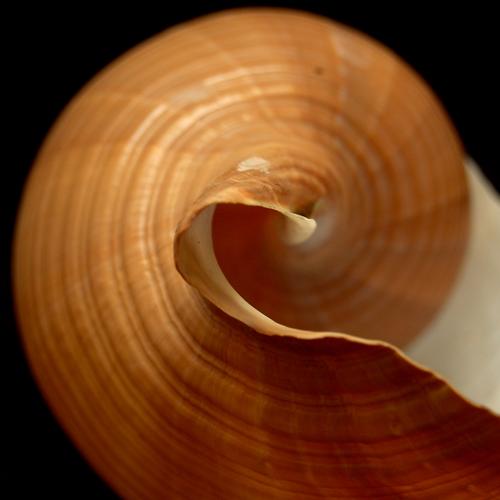
|
|
|
| Pythagoras (5th century BC), discovering the unspoken "golden" number Φ, (Φ = 1.61803398874989757520…) corresponding to the perfect analogies in form, the Golden Ratio, and that gave birth to the "divine analogy", with a direct relationship between beauty, harmony and dimension. The number Φ represents the mathematics of beauty, the realization of the abstract idea of aesthetics derived from the world of ideas, the world of forms & shapes, and divine harmony in the field of geometry. Harmony refers to exterior beauty, with the interior (the soul, the pure heart) and with the distinction and the measure of that beauty (the right proportion of words & deeds). The theory of the ‘Harmony of the spheres’, cosmic harmony with musical harmony are combined as the great philosopher Pythagoras attempted to explain the position and motion of the planets in the celestial dome. Using musical terms, such as intelligent musical intervals, he determined the interplanetary distances in the form of a scale. 1. The Birth of Music  hrough measure, pulse and rhythm (grouping a certain number of pulses), music is born. The Greeks were familiar with the idea that music soothes, delights, creates morale and heals. The effect that music had on human souls was obvious to them, as well as its close affinity with the laws governing the universe. hrough measure, pulse and rhythm (grouping a certain number of pulses), music is born. The Greeks were familiar with the idea that music soothes, delights, creates morale and heals. The effect that music had on human souls was obvious to them, as well as its close affinity with the laws governing the universe.Regarding Pythagoras and the Pythagoreans (5th century BC), the order of the planets of our solar system is related to the theory of the Harmony of the Spheres. The theory explains that each rotating celestial body produces a specific sound / note. The Moon is identified with what is known to us as the musical note ‘Re’ (D), Hermes with ‘Do’ (C), Aphrodite (Venus) with ‘Ti’ (B), the Sun with the ‘La’ (A), Mars with the ‘Sol’ (G), Jupiter with the ‘Fa’ (F) and Saturn with the ‘Mi’ (E flat). The number 7 represents the seven known planets, Mercury, Venus, Mars, Jupiter, Saturn, Moon, Sun. At the same time, it expresses the law of evolution. The Pythagoreans considered the number 7, the number Virgo, "the ruler and lord of all." It is associated with the seven days of the phases of the Moon, and the seven intervals of the Pythagorean Music Scale. The number 7 is the harmony of the World itself. Also representing the completion of cycles. These fundamental physical, mathematical, musical, and astrophysical knowledge, such as Pythagoras' "Harmony of the Spheres" and "Law of the Octaves," established music as an exact science with a mathematical explanation and background. The "tetractys" or tetrad as the basis of Pythagorean teaching, advocated that the sounds of the celestial bodies compose a cosmic music, because the distances and velocities of the planets and the plain stars are governed by the same numerical reasons that produce a symphony of sounds. The harmonic sound arrangements take the form of simple arithmetic relations: 2/1 (octave), 3/2 (fifth), 4/3 (fourth). Therefore according to the Pythagoreans, the secret of music and cosmic harmony are hidden in the relations of the first four natural numbers (1, 2, 3, 4). 2. The first applications of Sound Therapy from Antiquity The Olympian god Apollo was recognized as the god of Music and Medicine and almost all civilizations from antiquity to today, use sound and vibrations to cure many pathological and psychological ailments. The hero - doctor Asclepius, in the ancient Greek world is associated with the healing process. He treated mental disorders with songs, rhythm and tone. The philosophers Plato and Aristotle claimed that music influenced the soul and emotions. Plato states that astronomy and music are sister sciences. Hippocrates also played music for his patients, as part of his holistic approach of treating the individual rather than the disease as he always reminded us. The mystic Pythagoras, in the 6th century BC, founded a school of teaching therapies through sound and music. He applied treatments for various ailments, using different musical instruments (e.g. the Lyre, adding the 8th string to the Terpander lyre, the flute, etc.). The Voice (often reciting poems or specific words), the spaces (creating gaps of silence thus giving rhythm), the fluctuations of tones and intensity, were used to treat mental illnesses, diseases of the mind and body. Pythagoras described them as "musical medicine". In ancient Egypt, music therapy was practiced in temples. In Biblical times, they used instruments to remove evil spirits from human souls. Native American and African cultures to this day, use song and dance to heal patients. Around music, song and dance, they gather to celebrate, change the weather, awaken the spirits of nature, express their gratitude or sorrow and as a general force in their lives.
3. Nowadays
ARMONΙASIS Harmonic Activations |





